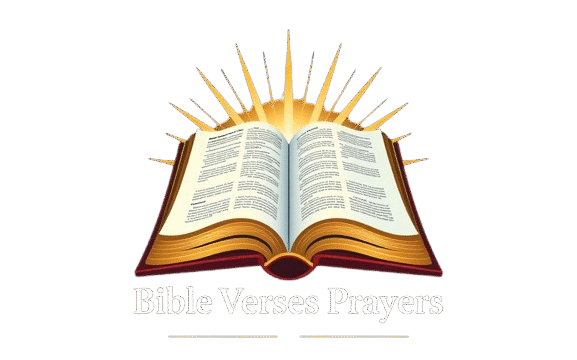There are certain sounds that transcend language, culture, and logic. “Tralalero tralala” is one of them. It means absolutely nothing and somehow everything all at once. It’s the sound of pure, unfiltered joy—the verbal equivalent of skipping through a meadow or dancing in your kitchen when nobody’s watching.
But where does this delightful bit of nonsense come from? Why does it feel so universally understood? And more importantly, why does it make us smile? Let’s dive deep into the wonderful world of “tralalero tralala” and discover why meaningless sounds sometimes carry the most meaning of all.
What Does “Tralalero Tralala” Actually Mean?
Here’s the beautiful truth: it means nothing. Absolutely nothing.
And that’s precisely the point.
“Tralalero tralala” (and its many variations like “tra-la-la,” “tralala,” or “tralalala”) is what linguists call a vocable—a sound or syllable used in music or speech that has no semantic meaning. It’s the sound you make when:
- You’re singing a tune but forgot the lyrics
- You’re in such a good mood that words feel inadequate
- You’re trying to convey carefree happiness
- You’re annoying your siblings (a time-honored tradition)
- You’re literally too joyful to form coherent thoughts
Think of it as the verbal version of a smiley face. It doesn’t communicate specific information; it communicates a feeling, a vibe, an energy.
The Origins: A Global Phenomenon
While pinpointing the exact origin of “tralalero tralala” is like trying to capture sunlight in a jar, we can trace similar vocalizations across cultures and centuries.
The Folk Song Connection
“Tra-la-la” appears in folk music traditions worldwide. Medieval songs, Renaissance madrigals, and traditional ballads often included these nonsense syllables as refrains. They served practical purposes:
- Easy to remember: When most people couldn’t read, simple syllables helped songs spread
- Universally singable: No language barrier when you’re just saying “tra-la-la”
- Rhythmic filler: Perfect for keeping the melody going between verses
- Pure expression: Sometimes joy doesn’t need words
The Italian Influence
“Tralalero” has particular roots in Italian folk music. Genoa, Italy, has a traditional polyphonic singing style called “Trallalero” (with two L’s), which features different vocal parts mimicking instruments. Singers use syllables like “ba,” “du,” and various “la” sounds to create complex harmonies.
The word itself likely comes from this tradition, spreading across Europe as folk music traveled with merchants, sailors, and wandering musicians.
The Operetta Era
The 19th century operetta scene embraced “tra-la-la” with enthusiasm. Characters would burst into elaborate “tra-la-la” choruses to express joy, mock seriousness, or simply because it sounded delightful. Gilbert and Sullivan operettas are famous for their playful use of nonsense syllables.
Why We Love Nonsense Sounds
There’s actual psychology behind why “tralalero tralala” brings us joy:
1. Phonetic Pleasure
The sounds themselves are pleasant. The “tr” gives a light, tripping quality. The repeated “la” is open and bright—linguistically associated with happiness across many languages. There’s a reason babies’ first words often include “la” sounds; they’re easy and feel good to make.
2. Childhood Nostalgia
“Tra-la-la” is the sound of nursery rhymes, children’s songs, and carefree youth. Hearing it triggers memories of simpler times when singing nonsense was not only acceptable but encouraged.
3. Freedom from Meaning
In a world obsessed with productivity, efficiency, and meaningful communication, sounds that mean nothing are rebellious. “Tralalero tralala” is deliciously pointless, and that pointlessness is liberating.
4. Universal Understanding
You don’t need to speak the same language to understand “tra-la-la.” It crosses borders, transcends cultures, and communicates something fundamental: joy, playfulness, lightness.
Tralalero Tralala in Pop Culture
This delightful nonsense has made countless appearances in popular culture:
Music
- The Banana Splits: “Tra la la, tra la la la” was their iconic theme song refrain
- Countless Disney songs: From Snow White to modern films, “la-la-la” choruses abound
- Holiday music: Christmas carols are full of “fa-la-la” (looking at you, “Deck the Halls”)
- Pop songs: When artists want to convey carefree happiness, out come the “la-la-las”
Literature and Film
Characters singing “tra-la-la” instantly communicate they’re in a good mood, blissfully unaware, or charmingly naive. It’s shorthand for innocence and joy.
Internet Culture
Memes and viral content use “tralala” to mock excessive cheerfulness, indicate sarcasm, or genuinely express goofy happiness. It’s become a text-based way to convey a carefree attitude.
The Many Moods of Tralalero Tralala
Context is everything. Depending on how you use it, “tralalero tralala” can mean:
Genuine Joy: Skipping down the street, singing “tralalero tralala” because life is good and you don’t care who hears.
Sarcastic Cheerfulness: “Oh, I have three deadlines tomorrow? Tralalero tralala, everything is fine!” (Narrator: Everything was not fine.)
Intentional Annoyance: Siblings everywhere know the power of an aggressively cheerful “TRALALERO TRALALA” sung at maximum volume.
Carefree Ignorance: “I haven’t checked my email in three days, tralalero tralala!” Sometimes ignorance is bliss.
Musical Placeholder: When you’re singing along but don’t know the words, “tralalero tralala” saves the day.
How Different Languages Say It
While “tralalero tralala” has Italian roots, nearly every language has equivalent nonsense syllables for singing:
- English: Tra-la-la, la-di-da
- French: Tra-la-la, lalala
- German: Trallala
- Spanish: Tralará, lararí
- Japanese: Lalala (ラララ)
- Korean: Lalala (라라라)
- Arabic: La la la (لا لا لا)
The “la” sound appears to be nearly universal, which makes sense—it’s one of the easiest sounds for humans to produce and sustain.
The Science of Singing Nonsense
Researchers studying music and language have found that vocables like “tralalero tralala” serve important functions:
Cognitive Benefits
- Reduces stress: Singing, even nonsense, releases endorphins
- Improves mood: The act of vocalizing happiness can create actual happiness
- Enhances memory: Melodies with simple syllables are easier to remember
- Builds community: Group singing of simple sounds creates bonding
Musical Function
- Maintains rhythm: Vocables keep timing consistent
- Showcases melody: Without words to focus on, the tune becomes prominent
- Allows improvisation: Singers can create without linguistic constraints
- Crosses language barriers: Entire audiences can join in regardless of native language
When to Use Tralalero Tralala
Not sure when to deploy this delightful nonsense? Here’s your guide:
Perfect Occasions:
- Walking to get coffee on a sunny morning
- Annoying your cat (they hate it, but you’ll enjoy it)
- Pretending you’re in a musical
- When someone asks how you’re doing and you’re too tired for real words
- Celebrating small victories (found matching socks, nailed a parking spot, etc.)
- Making mundane tasks more bearable (cleaning becomes fun with a “tralalero tralala” soundtrack)
Maybe Reconsider:
- During job interviews
- At funerals
- While your partner is trying to tell you something serious
- In court
- During existential crises (though it might help?)
The Philosophy of Meaningless Joy
Here’s something deeper: in a world that demands everything have purpose, productivity, and meaning, “tralalero tralala” is revolutionary. It’s joy for joy’s sake. Sound for the pleasure of making sound. Existence without justification.
We’ve become so obsessed with optimization that we’ve forgotten the value of the pointless. Children understand this instinctively—they sing nonsense all day without needing a reason. Somewhere along the way, adults forget that not everything needs to mean something.
“Tralalero tralala” reminds us that sometimes the best moments are the ones that don’t advance any goal, don’t appear on any to-do list, and don’t improve us in any measurable way. They just feel good.
Embracing Your Inner Tralalero
Want to incorporate more joyful nonsense into your life? Try these:
- Morning Tra-La-La: Start your day by singing something—anything—to the tune of “tralalero tralala”
- Mundane Task Soundtracks: Do the dishes? Tralalero tralala. Folding laundry? Tralalero tralala.
- Replace Complaints: Next time you’re annoyed, try expressing it through aggressive “tra-la-las” instead
- Share the Joy: Text “tralalero tralala” to a friend for no reason. Spread the nonsense.
- Create Your Own: Invent personal nonsense syllables. Maybe you’re more of a “doodly-doo” person.
Conclusion
“Tralalero tralala” teaches us something profound wrapped in silliness: not everything needs to make sense to make us happy. Sometimes the most meaningful expressions are the ones that mean nothing at all.
It’s a reminder that joy doesn’t need justification, that playfulness isn’t childish, and that the human voice singing nonsense syllables is one of the purest forms of expression we have.
So go ahead. Sing it. Say it. Type it in a text. Let your inner child loose with a hearty “TRALALERO TRALALA!”
Because in a world that’s often too serious, too heavy, and too meaningful, sometimes what we need most is a little meaningless joy.






